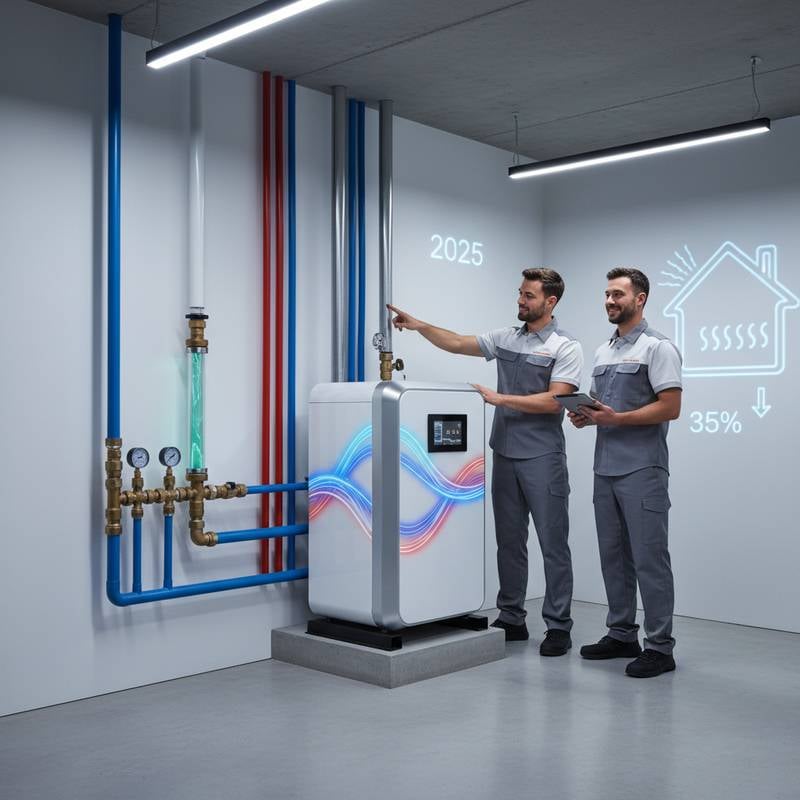Phase-Change Materials: Revolutionizing Home Cooling Efficiency
Phase-change materials, often abbreviated as PCMs, are innovative solutions that absorb and release heat to maintain stable indoor temperatures. These materials act like thermal sponges, soaking up excess heat during the day and releasing it as the environment cools at night. By reducing the need for air conditioning, PCMs can significantly lower energy bills, offering a practical path to both comfort and sustainability. This article explores how PCMs work, where they fit into home design, and why they are worth considering for your next project.
The Power of PCMs in Energy Efficiency
With energy costs on the rise and environmental concerns gaining urgency, homeowners are increasingly seeking ways to reduce consumption without sacrificing comfort. Air conditioning often accounts for a substantial portion of household energy use, especially in warmer climates. PCMs address this challenge by minimizing temperature fluctuations, which in turn decreases reliance on mechanical cooling systems. Beyond cost savings, their ability to cut energy use translates to a smaller carbon footprint, aligning with broader sustainability goals.
Moreover, homes equipped with energy-efficient features like PCMs tend to hold higher resale value. Buyers recognize the long-term benefits of reduced utility bills and enhanced living conditions. For those prioritizing both immediate comfort and future investment, PCMs present a compelling option.
Strategic Planning for PCM Integration
Before incorporating phase-change materials into your home, careful planning ensures optimal performance and cost-effectiveness. Consider the following key factors to guide your decision-making process.
1. Assessing Climate Compatibility
PCMs deliver the greatest benefits in regions with significant day-to-night temperature swings, such as desert or temperate zones. In consistently hot or humid areas, their impact on energy savings may be less noticeable. Evaluate your local weather patterns to determine if PCMs align with your climate needs.
2. Identifying Optimal Placement
Strategic placement maximizes the effectiveness of PCMs. Ceilings are particularly efficient since heat naturally rises, while walls and floors also serve as effective installation points. Focus on high-heat areas like top-floor rooms or spaces with large windows to capture and redistribute thermal energy.
3. Complementing Existing Insulation
Phase-change materials do not replace traditional insulation but rather enhance its performance. Insulation blocks heat transfer, while PCMs manage temperature peaks and valleys. Pairing the two creates a balanced system that maintains comfort with minimal energy input.
4. Tailoring to Project Scope
For new construction, PCMs can be seamlessly embedded into drywall, concrete, or plaster during the building phase. In existing homes, retrofit options like panels or tiles offer flexibility, though installation may require additional labor. Assess whether a full-scale integration or a targeted application suits your budget and timeline.
Creative Applications for PCMs in Home Design
Phase-change materials adapt to a variety of home environments, blending functionality with innovation. Consider these practical ideas for integration.
- Wall Systems: Install PCM-enhanced drywall in bedrooms or living areas to ensure consistent temperatures where comfort matters most.
- Ceiling Solutions: Use PCM tiles in kitchens or attics, which often trap heat, to prevent overheating during peak hours.
- Flooring Enhancements: Layer PCMs beneath radiant heating systems or in sunrooms to balance warmth throughout the day.
- Textile Innovations: Explore PCM-infused curtains or bedding as supplementary options for smaller-scale temperature control.
For homes with passive solar design, PCMs can amplify efficiency. Position them near south-facing windows to absorb solar heat during the day, then release it evenly as evening temperatures drop.
Variables Impacting PCM Performance
Several factors influence how well PCMs perform and whether they justify the initial investment. Homes with subpar insulation may require upgrades before PCM installation to achieve full benefits. Local building codes might dictate specific material standards, such as fire resistance ratings, so verify compliance before proceeding. Additionally, while PCM panels can be painted or plastered for aesthetic appeal, decorative choices could limit material options or increase costs.
Budget also plays a critical role. High-end PCM integrations promise greater long-term savings, but even modest applications can yield noticeable improvements in comfort and efficiency. Weigh the upfront expense against projected energy reductions to find the right balance for your needs.
Answers to Common PCM Questions
Do phase-change materials serve as insulation substitutes?
No, they regulate temperature fluctuations rather than block heat transfer. Combining PCMs with proper insulation yields the best results.
Are PCMs suitable for older homes?
Yes, retrofit options like panels and tiles make installation feasible, though new construction allows for more cost-effective integration.
How safe are PCMs for residential use?
Most products are non-toxic and meet fire safety standards. Always review manufacturer certifications to confirm safety compliance.
What is the lifespan of PCMs?
Quality PCMs can endure thousands of thermal cycles, often lasting decades under typical conditions without performance loss.
Do PCMs function in every climate?
They excel in areas with daily temperature variations. In uniformly hot or cold regions, energy savings may be less significant.
Is maintenance required for PCMs?
Once installed, PCMs need minimal upkeep, as they lack moving parts unlike traditional HVAC systems.
Transforming Comfort with Smart Materials
Integrating phase-change materials into your home goes beyond trimming energy expenses. It creates a living space that adapts to thermal changes naturally, ensuring steady comfort regardless of external conditions. Whether planning a renovation or designing a new build, explore how targeted PCM applications, such as ceiling tiles or wall panels, can elevate your environment. This intelligent approach to temperature management offers lasting value, blending innovation with everyday practicality.






